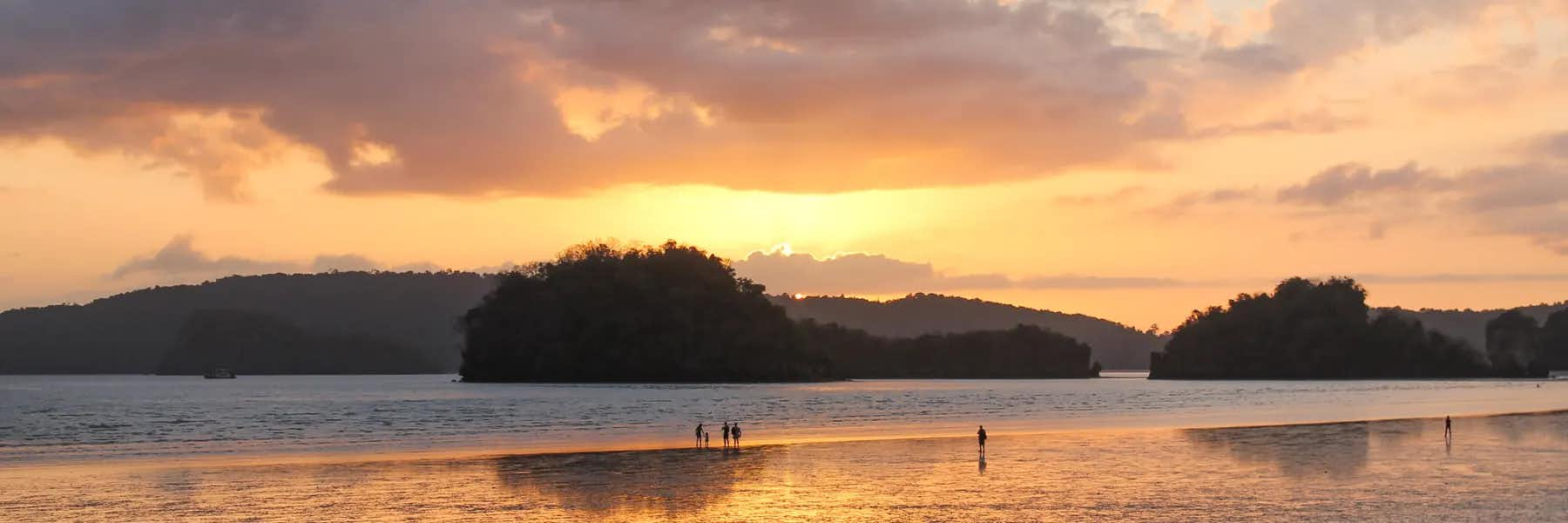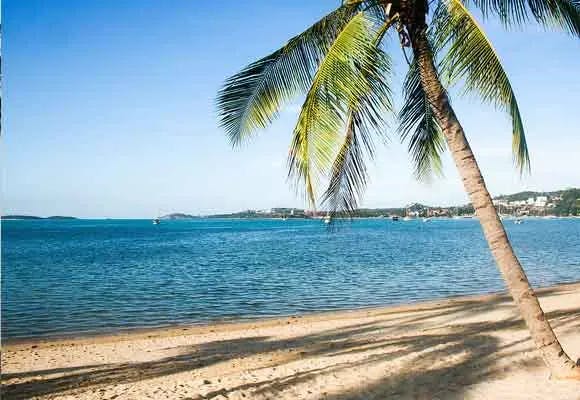Once known as Siam, the Kingdom of Thailand is a long, skinny country running over 1,400 miles in length from top to toe. It shares borders with Myanmar (Burma), Laos, Cambodia, and Malaysia. The capital is Bangkok. The time zone is GMT +7 (12 hours ahead of Washington, DC during Standard Time).
Thailand has a rich and lengthy history. A unified Thai kingdom was established in the mid-14th century and Thailand is the only Southeast Asian country never to have been colonized by a European power. A bloodless revolution in 1932 led to the establishment of a constitutional monarchy. In alliance with Japan during World War II, Thailand became a U.S. treaty ally in 1954 after sending troops to Korea and later fighting alongside the U.S. in Vietnam. Since 2005, Thailand has experienced several rounds of political turmoil including a military coup in 2006 that ousted then Prime Minister Thaksin Chinnawat, followed by large-scale street protests by competing political factions in 2008, 2009, and 2010. Thaksin’s youngest sister, Yinglak Chinnawat, in 2011 led the Puea Thai Party to an electoral win and assumed control of the government.
In early May 2014 Yinglak was removed from office by the Constitutional Court and in late May 2014 the Royal Thai Army staged a coup against the caretaker government. The head of the Royal Thai Army, Gen. Prayut Chan-ocha, was appointed prime minister in August 2014. The interim military government created several interim institutions to promote reform and draft a new constitution. Elections are tentatively set for mid-2017.
Thailand is currently monarchy headed by King Bhumibol Adulyadej, Rama IX, who is loved and revered by the majority of the population. Criticism of the monarchy, otherwise known as Lèse Majesté, can receive harsh penalties. The law even goes so far as to apply to previous or deceased monarchs. The country is governed by a military junta that took power in May 2014.
With 76 provinces and a population of almost 70 million, the country has been known as Thailand since 1939 when the name was officially changed from Siam. It briefly reverted back to the old name from 1945 to 1949. About 75% to 95% of the population is ethnically Thai, with almost 40% of its residents having partial Chinese ancestry. The remainder of the population consists of Thai Malays, Mons, Khmers, and various hill tribes.
Thailand’s climate is diverse and ruled by monsoons. Northern Thailand experiences a rainy season, which can last from July to November. From then until February it is fairly dry, but a good deal cooler. March until June is the hot season, when daytime temperatures can easily reach 104 F. During the cool season, nighttime temperatures rarely fall below 55 F.
The southern half of the country has only two seasons, wet and dry. The wet season can last from July until October/November, with the rest of the year being dry and cooler. Temperatures in the south don’t vary that much throughout the year.
The official language is Thai. Most professionals speak English, and most expats who live in recognized expat and tourist areas don’t bother to learn the language. However, don’t expect to find too many English speakers if you go “up country” into rural regions such as Isaan.
Economically, Thailand has had its ups and downs. From 1985 to 1996, Thailand had the world’s highest economic growth of 12.4% annually. By 1998, the economy had contracted by 10.8% before it slowly began to recover the following year. During the first few years of the new millennium, growth averaged between 5% and 7%. However, political uncertainty leading to a decline in investor and consumer confidence sank the economic growth to a low of 0.1% by 2011. After struggling back to GDP growth of 7.5% by 2011, the economy once again seems to be on a downward trend following the coup of May 22, 2014.
12 Facts about Thailand
Thailand is the only Southeast Asian country that was never colonised by a European country. In fact, in the Thai language, the name of the country is Prathet Thai which means “land of the free.” Very fitting!
Thailand is where you’ll find both the smallest and the largest creatures. The smallest mammal in the world, the bumblebee bat, calls Thailand home. You can also find the largest fish, the whale shark, in Thai waters.
People often marvel at the forests and jungles of Thailand, but there used to be more. What most people don’t realise is that over one hundred years ago, hardwood forest covered nearly all of northern Thailand. Today, about a quarter of that forest is left. For this reason, Thailand has completely banned logging.
Thailand loves its King and shows great respect for the monarchy. The well-known Hollywood movie “The King and I” was never shown in Thai theatres because it was considered to be derogatory to the King. How serious are they about their King? Thailand has the lese majeste rule, meaning that if you commit disrespectful acts toward the King, imprisoned for treason could be your fate.
There are about 35,000 temples in Thailand. Thailand is truly a land of temples. Visiting them requires modest clothing, meaning no shorts or sleeveless shirts.
Thailand is home to many, many animals. About a tenth of all of the animal species on the planet call Thailand home, and a tenth of all bird species. To put that into perspective, Thailand has more birds than Europe and America combined!
The national flower of Thailand is the orchid. If you love exotic flowers, you’ll be pleased to know that 1,500 orchid species can be found growing wild in Thai forest. There’s a reason why it is one of the world’s largest orchid exporters.
A smile can go a long way, and you’ll find more smiles in Thailand than just about anywhere else. In fact, it’s sometimes known as the “land of smiles” because the people of Thailand seem to be always ready with a smile. They are a peace-loving culture, desiring harmony over conflict.
Thailand most exported crop? Rice, of course! Think of all the tasty Thai dishes that you love. Rice is a staple in Thai cuisine.
Red Bull, the world-famous energy drink, has its roots in Thailand. Based on Krating Daeng, a drink made popular in Thailand (and eventually across Asia) since 1976. Red Bull was modified to “suit western tastes.”
That Bangkok street you’re driving? In the past, it might have been water. Bangkok used to be referred to as the “Venice of the East” due to the number of buildings built on stilts above the river. Gradually, most of the canals (or ‘klongs’ in Thai) were filled in and became the streets you see today.
The world knows Bangkok as “Bangkok.” To Thai people, Bangkok is known as Krung Thep. It's real name is one of the longest names of a place in the world, made up of Pali and Sanskrit root words: Krungthepmahanakhon Amonrattanakosin Mahintharayutthaya Mahadilokphop Noppharatratchathaniburirom Udomratchaniwetmahasathan Amonphimanawatansathit Sakkathattiyawitsanukamprasit. What does that name mean? It means “City of Angels, Great City of Immortals, Magnificent City of the Nine Gems, Seat of the King, City of Royal Palaces, Home of Gods Incarnate, Erected by Visvakarman at Indra’s Behest.”








